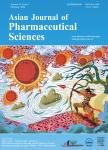Complex formulations, simple techniques: Can 3D printing technology be the Midas touch in pharmaceutical industry?
Complex formulations, simple techniques: Can 3D printing technology be the Midas touch in pharmaceutical industry?作者机构:College of PharmacyKeimyung University
出 版 物:《Asian Journal of Pharmaceutical Sciences》 (亚洲药物制剂科学(英文))
年 卷 期:2019年第14卷第5期
页 面:465-479页
核心收录:
学科分类:100702[医学-药剂学] 1007[医学-药学(可授医学、理学学位)] 1006[医学-中西医结合] 1002[医学-临床医学] 08[工学] 0802[工学-机械工程] 080201[工学-机械制造及其自动化] 100602[医学-中西医结合临床] 10[医学]
基 金:supported by Keimyung University Research Grant of 2017
主 题:Three-dimensional printing Personalized medicine Fused deposition modeling Inkjet printing Complex formulations
摘 要:3 D printing is a method of rapid prototyping and manufacturing in which materials are deposited onto one another in layers to produce a three-dimensional object. Although 3 D printing was developed in the 1980 s and the technology has found widespread industrial applications for production from automotive parts to machine tools,its application in pharmaceutical area is still limited. However,the potential of 3 D printing in the pharmaceutical industry is now being recognized. The ability of 3 D printing to produce medications to exact specifications tailored to the needs of individual patients has indicated the possibility of developing personalized medicines. The technology allows dosage forms to be precisely printed in various shapes,sizes and textures that are difficult to produce using traditional techniques. However,there are various challenges associated with the proper application of3 D printing in the pharmaceutical sector which should be overcome to exploit the scope of this technology. In this review,an overview is provided on the various 3 D printing technologies used in fabrication of complex dosage forms along with their feasibility and limitations.



